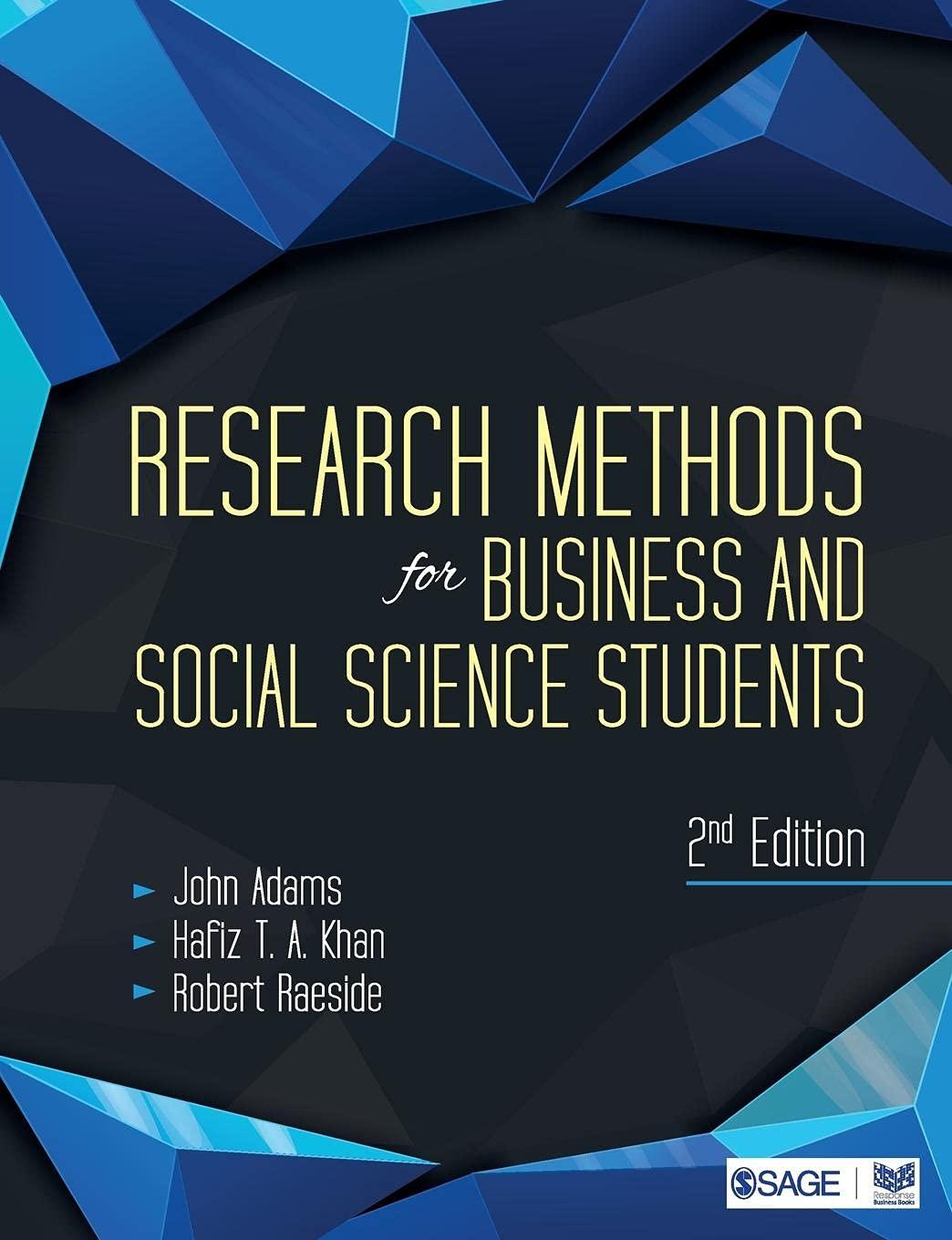Question
Please do not copy and paste the answer from somewhere! PLEASE LOOK AT THE QUESTIONS BELOW AND ANSWER IT CORRECTLY AND CLEARLY. Introduction Case studies
Please do not copy and paste the answer from somewhere!
PLEASE LOOK AT THE QUESTIONSBELOW AND ANSWER IT CORRECTLY AND CLEARLY.
Introduction
Case studies bring real-world situations into the classroom. They are designed to immerse you into a situation and put you in the position of making some decisions. Management is about decision-making and case studies are a good way of assessing your comfort level with making decisions with limited information and under pressure. You need to think carefully about risks, costs, returns and timing.
Your first reaction after reading a case study might be a feeling of being overwhelmed. After reading the case again you might start to wonder whether there is enough information to make a decision. Don't despair. Cases are written to give you a real sense of the information available to the people in the case and why decisions need to be made quickly. There are no right or wrong answers to case studies. They are an opportunity to apply what you've learned in this class and previous classes, use critical thinking and demonstrate your analytical and decision-making skills.
Some advice for tackling this case study: 1) Read the case thoroughly, including the appendices/exhibits which contain many details necessary to make your arguments;2) identify the central business issues from the more trivial ones; 3) identify overarching strategies rather than details; 4) identify the constraints of the situation; 5) identify all the possible courses of action; 6) evaluate each of the alternatives in light of the available information in the case and 7) make recommendations based on your evaluation. You do not need to do any research beyond the information included in the case study - please do not add information about the company outside the case study. More general information on how to approach a case study is available from these websites:
- https://hbsp.harvard.edu/casestudyhandbook/
- http://wps.prenhall.com/bp_laudon_essmis_6/21/5555/1422312.cw/content/index.html
- http://college.cengage.com/business/resources/casestudies/students/analyzing.htm
- http://highered.mheducation.com/sites/dl/free/0072969431/362614/guide_to_case_analysis.pdf
QUESTIONS:
***MAKE SURE YOU CITE YOUR ANSWERS CORRECTLY***
Reflecting on the material we have covered this semester:
1. Download and read the Nucleon Inc. case study (instructions are under Course Resources). Read it again and make some notes based on the advice above.
- https://www.studocu.com/ko/document/seoul-national-university/economics/nucleon-case-case-study-1/75056546#
2. Write a paper, at least 6 pages but no longer than 8 pages, answering the following questions:
- What are your recommendations regarding the manufacturing of CRP-1 for Phase 1 and Phase 2 clinical trials? Please compare all the options open to the company using quantitative and qualitative details from the case study (do not overlook the exhibits) and evaluate their advantages and disadvantages before making your recommendation. Please consider costs, returns and risks for all options in a side-by-side comparison.
- What are your recommendations regarding manufacturing for Phase 3 clinical trials and commercialization? Please make sure your choice is consistent with your recommendation for Phases 1 & 2 and is informed by quantitative and qualitative details from the case study.
- How would you justify your recommendations to would-be investors in the company? Identify the details from the case that investors are most likely to be interested in. Calculating the decision tree and NPV of the different options for the company is outside the scope of this course, however, please include a comparison of risks, costs and returns that may persuade a would-be investor.
- What is your recommendation(s) regarding Nucleon's long-term manufacturing strategy? What could the company look like in 10 years from the time of the case study? Describe the long-term strategies the company could pursue, and whether your short-term and long-term recommendations are consistent.
3. Edit your paper - you do not need to re-iterate the scenario, or facts from the case study unless you are using them to support your argument; please make sure that you clearly answer each of the questions - you will not get any credit for details not relevant to these questions; please support your arguments with quantitative and qualitative information from the case, do not overlook the exhibits at the end and be prepared to analyze numbers into other key parameters; do not jump to conclusions - think about the ladder of inference; don't forget to think about the business concepts we have learned about this semester and the factors that are important for a business' success! Please also remember that decisions have consequences that should be considered and opportunity costs for decisions not made.
4. Provide a REFERENCES.
Step by Step Solution
There are 3 Steps involved in it
Step: 1

Get Instant Access to Expert-Tailored Solutions
See step-by-step solutions with expert insights and AI powered tools for academic success
Step: 2

Step: 3

Ace Your Homework with AI
Get the answers you need in no time with our AI-driven, step-by-step assistance
Get Started


